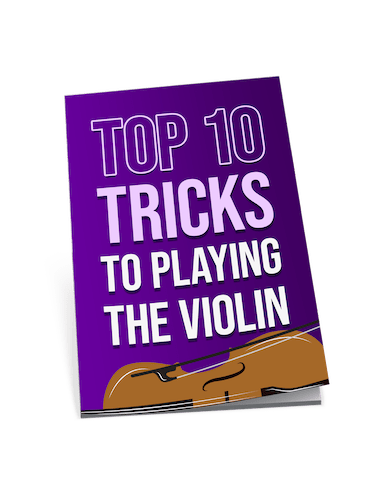Best
VIOLIN STRINGS FOR BEGINNERS
-
Overall: Advanced synthetic-core technology, yielding pliable playability
-
Best Feature: Advanced synthetic core design
-
TedScore™: 7/10
Best
VIOLIN STRINGS
FOR
ADVANCED PLAYERS
-
Overall: Quick Response Time
-
Best Feature: Settles Quickly
-
TedScore™: 9/10
Best
VIOLIN STRINGS FOR
INTERMEDIATE PLAYERS
DOMINANT BEST FOR AVERAGE VIOLINS
-
Overall: Strong And Steady, Compatible With Many Different Types Of Instruments
-
Best Feature: Available in different gauges
-
TedScore™: 8/10
I’ve always considered the violin a treasure chest of melodies, and the strings are the key to unlocking its excellent sound.
You may wonder, “What exactly is the correct violin string order?“
I know how scary it is to change the strings on your violin. It is crucial not to remove all the strings at once to avoid structural issues like the collapse of the bridge and sound post.
You may interchange the arrangement of the strings, pull it too tight to the point of breaking the string, or even incorrectly place the string on the tuning peg hole.
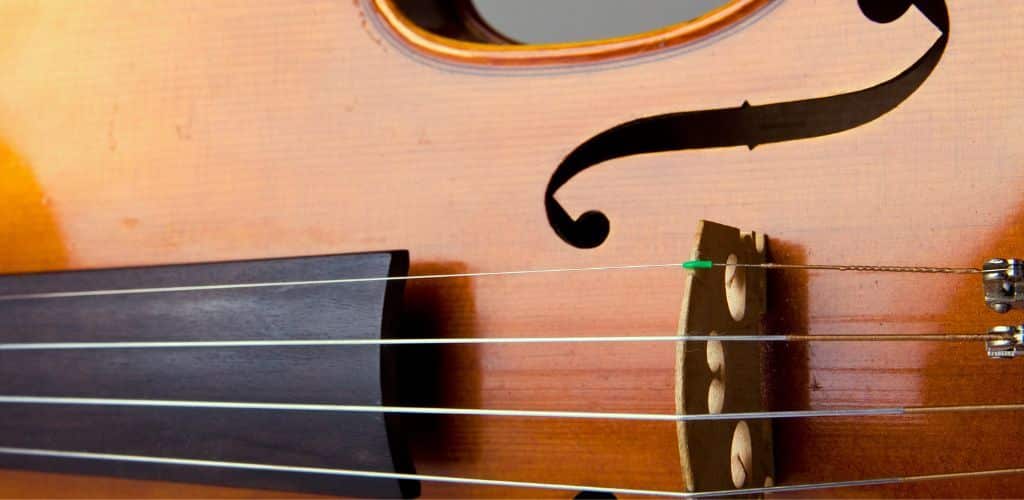
Don’t sweat it! You are strictly at the right Don’t, or should I say, at the right article.
In this article, we will tackle the correct order and all the details of maintaining violin strings.
Each of the four strings on a violin has a distinct note: the E string is the highest, followed by the A, D, and G strings.
Imagine your violin as a quartet of voices, ranging from the bright, sunny sparkle of the E string to the rich, chocolatey depth of the G string.
This order lays the groundwork for your instrument’s voice and how you navigate melodic instruments and string tuning.
Basics of Violin Strings
Understanding the lineup and the materials used to craft violin strings is the key to a harmonious playing experience.
Let’s familiarize you with each string’s identity and unique roles.
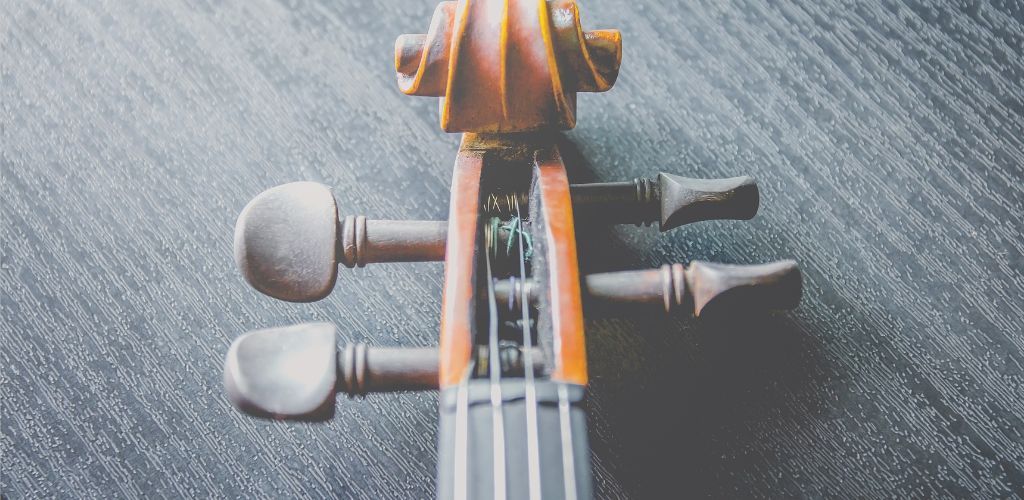
Identify Strings and Their Order
Think of your violinists as a party of four, each guest with a distinct voice.
Imagine them seated, left to right, with the G-string on your left shoulder and the E-string resting closer to your right.
From the left, you have the deep and rich G-string; next, the D-string resonates with a warm and full sound.
Your A-string carries a bright and clear tune, while the high-pitched E-string completes the ensemble.
The Correct Order of Violin Strings
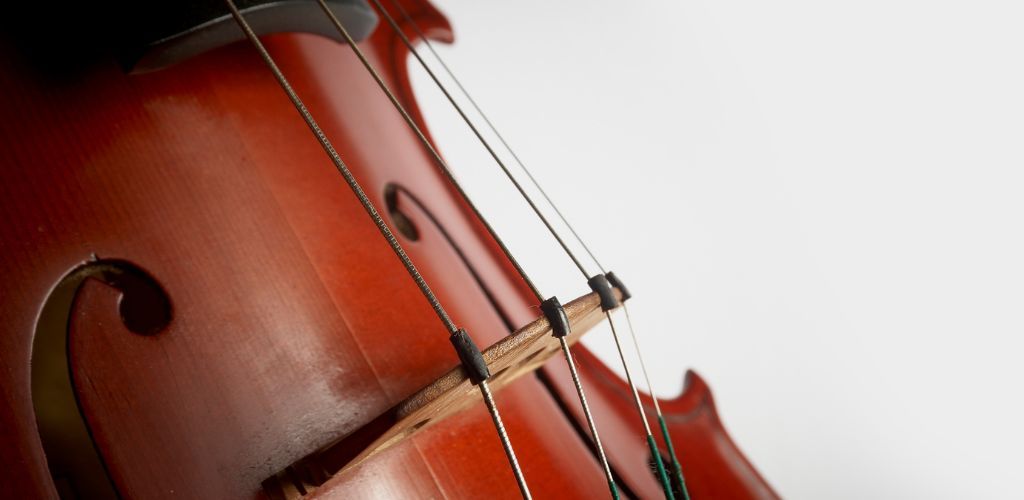
When changing violin strings, following the correct order is crucial to maintaining your instrument’s balance and preventing potential issues.
The standard sequence for changing violin strings is from low to high, starting with the G string, followed by the D string, then the A string, and finally the E string. This method ensures that the bridge and soundpost remain in their proper positions and that the string tension is evenly distributed across the instrument.
By adhering to this order, you’ll help your violin stay optimal you’ll and produce the best possible sound.
Material and Core Types
Gut core strings provide a warm and complex tone.
Steel core strings are your reliable friends, known for their clarity and strength.
Synthetic core strings are a blend of modern resilience and gut-like warmth for their tuneful flexibility.
Heavy gauge: thicker strings offer more resistance, granting a more powerful sound
Light gauge: thinner strings make violin playing easier but can sound less intense.

Your strings also come in different sizes, suiting violins from dainty to full-bodied and tension levels, balancing responsiveness and tone.
Regular Care and Avoiding Common Issues

Wiping your strings down with a soft, dry, clean cloth after every session will free them from dirt, rosin dust, and oils.
It’s a simple act that can save you from string tension woes and preserve sound quality much longer!
If you spot issues beyond essential maintenance, consult a luthier. These professionals can spot potential snags and perform necessary repairs before a minor wound becomes a full-blown problem.
Keeping a harmonious relationship with your instrument means balanced tension, a stable tailpiece, and well-attended strings for beautiful music every time.
How Often to Change Violin Strings

The frequency of changing violin strings depends on several factors, including the type of strings, your playing style, and personal preference.
Generally, it’s recommended to change violin strings every 300-400 hours of playing. However, if you notice a significant decrease in sound quality, playability, or string tension, it may be time to change your strings.
Additionally, if you’re using fine tuners, you may need to use them more frequently to maintain the correct pitch. Regularly changing your strings ensures that your violin continues to produce the best possible sound and remains a joy to play.
Selecting the Right Strings
Choosing the right strings for your violin can be a game-changer for your performance and technique. Let’s slide and find the strings that resonate with your violin’s soul.
Best Strings I Recommend!
Aviolin's Thomastik-infeld
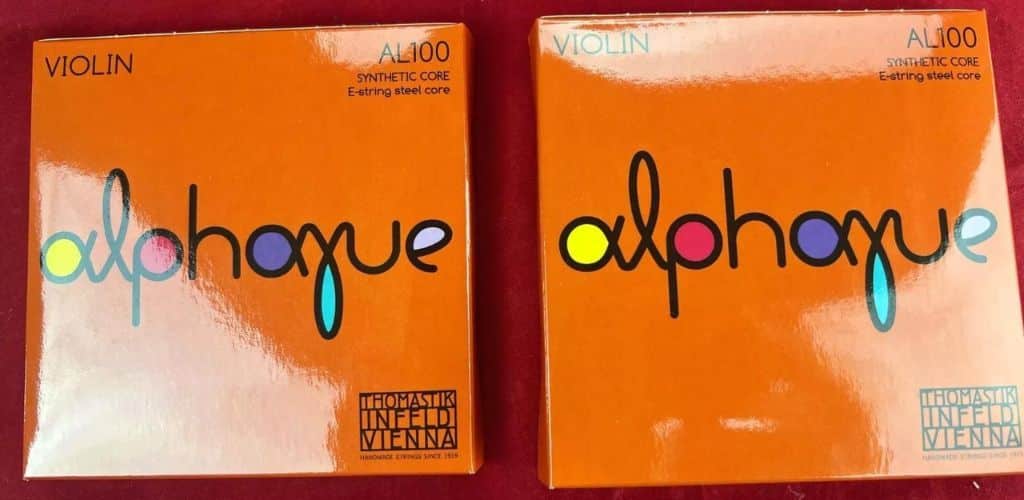
As a professional, I’m consistently impressed by the rich, nuI’med tones that Alphayue Thomastik-infeld strings bring. I regularly recommend them to my students for their unparalleled quality, reliability, and fractional price.
Their exceptional response and dynamic range truly enhance the expressive potential of any beginner violinist.
Thomastik Alphayue Violin Strings

FEATURES: Made with steel core, tin-plated winding and removable ball end
OTHER INFO: Produces a warm and rich tone with excellent projection
- Improves the sound of basic instruments
- The high-quality design ensures durability
- Has a quick and easy response, making it ideal for virtuosic playing
- Can be more expensive than other strings on the market
When you click ‘Check Price’, you’ll see there are loads of great places to buy this item. Our personal favorite is Sweetwater for the US, and Thomann and Gear4Music for the UK & Europe.
They are the largest music retailers, with excellent customer service, competitive prices, really fast shipping, and the longest guarantees.
The professional musician who wrote this article combined many things,
from the product build, manufacturer’s reputation through to feedback
from other users, to create our famous TedScore™.
Thomastik Dominant
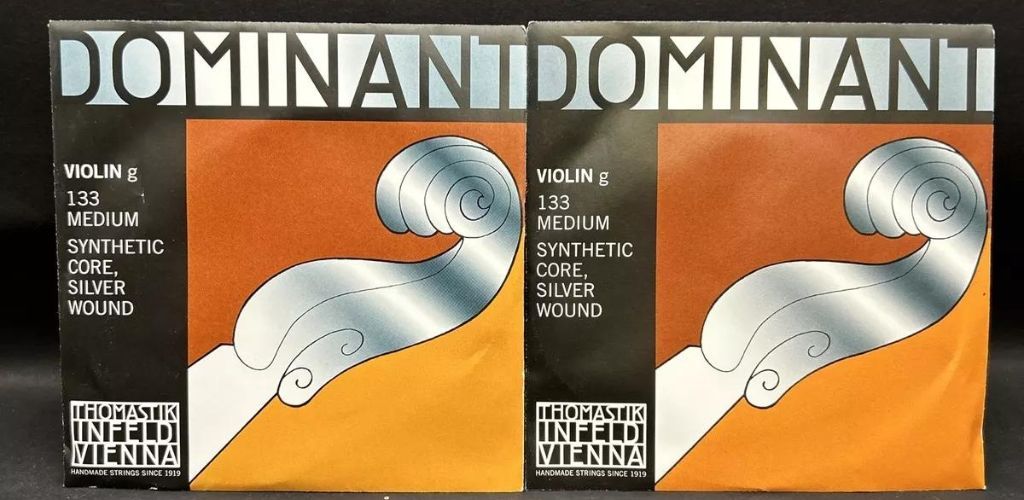
THOMASTIK DOMINANT strings are worth recommending because of their versatility and warm, clear sound. They are an excellent recommendation for my intermediate students seeking to elevate their performance.
Their balance of richness and playability provides a dependable foundation for those looking to refine their technique and expressiveness on the violin.
Thomastik Dominant

DESIGNED FOR: average violins
FEATURES: strong and steady, compatible with many different types of instruments
OTHER INFO:
Thomastik Dominant
- Durability
- None that I can think of, maybe a little plain, not very rich, extravagant
When you click ‘Check Price’, you’ll see there are loads of great places to buy this item. Our personal favorite is Sweetwater for the US, and Thomann and Gear4Music for the UK & Europe.
They are the largest music retailers, with excellent customer service, competitive prices, really fast shipping, and the longest guarantees.
The professional musician who wrote this article combined many things,
from the product build, manufacturer’s reputation through to feedback
from other users, to create our famous TedScore™.
EVAH PIRAZZI GOLD

In my professional experience, the EVAH PIRAZZI GOLD strings stand out with their exceptional tonal brilliance and nuanced articulation. I frequently recommend them to advanced violinists for pushing the boundaries of their violin capabilities.
Their robust projection and rich overtones are perfect for performers who demand the utmost expressiveness and a powerful, complex sound palette.
Pirastro Evah Pirazzi Gold
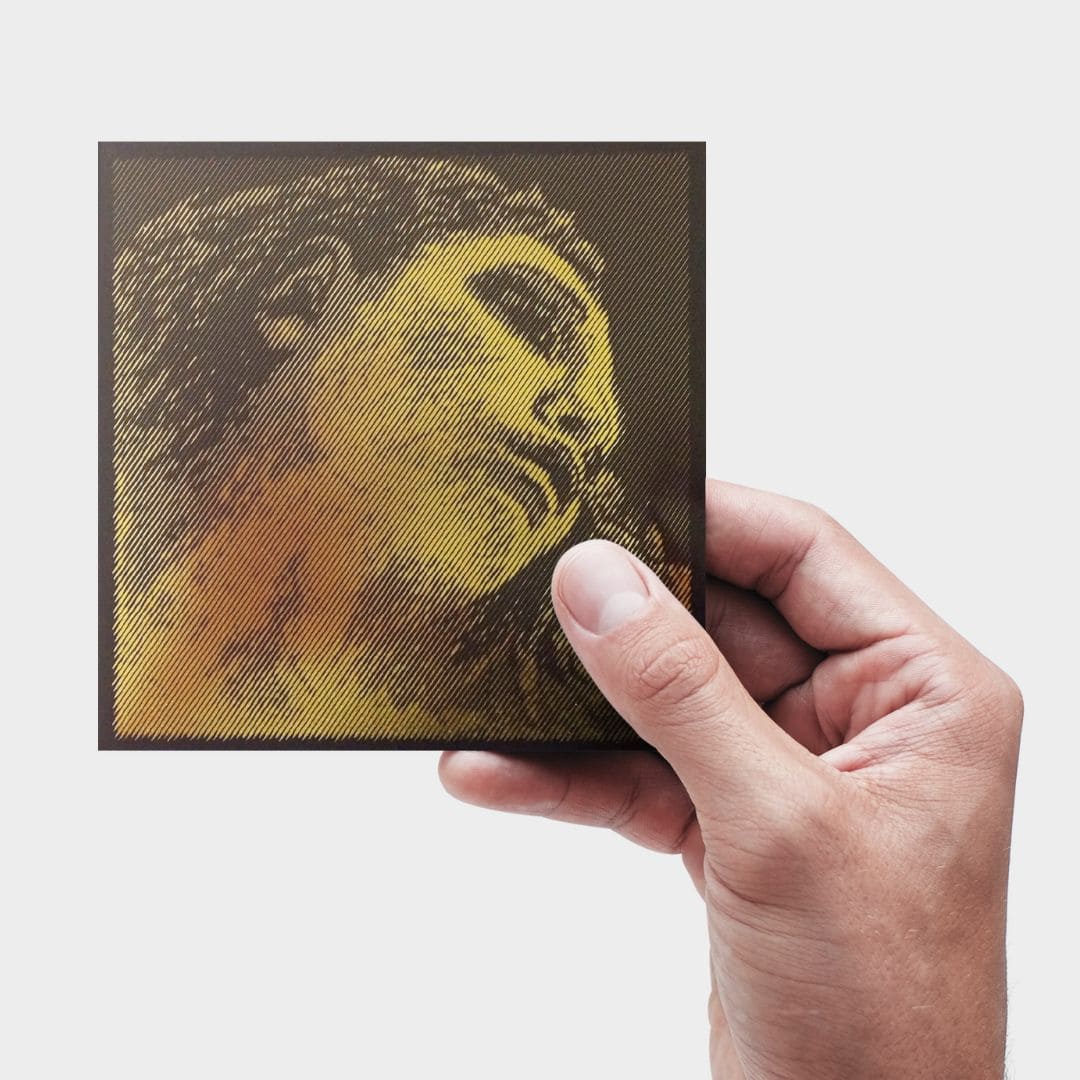
DESIGNED FOR: Projecting loudly
FEATURES: Quick response time
OTHER INFO: Settles quickly
Pirastro Evah Pirazzi Gold
- Settles quickly
- Needs lots of energy and power to play, not for the weak
When you click ‘Check Price’, you’ll see there are loads of great places to buy this item. Our personal favorite is Sweetwater for the US, and Thomann and Gear4Music for the UK & Europe.
They are the largest music retailers, with excellent customer service, competitive prices, really fast shipping, and the longest guarantees.
The professional musician who wrote this article combined many things,
from the product build, manufacturer’s reputation through to feedback
from other users, to create our famous TedScore™.
Violin String Order:
Let's Recap!
When you pick up your violin, you embrace four strings, each with a unique note: G, D, A, and E. By the way, this arrangement is from left to right!
It’s like each string at a time has its personality, starting with the G string, which has a rich, deep sound that lays the foundation.
Moving up, the well-tuned D string sits snugly in the middle of the thread string here. It offers a warm tone that balances out the quartet.

The A string then leaps into brighter territory, giving your melodies a clear, shining quality.
Lastly, there’s the elegant E string. It is there with the highest pitch, adding a sparkling finish to your music.
Get to know them well, and you’ll make beautiful music together; there’s more!!!
Now that you know there are violin strings, wouldn’t it be nicer if you also knew that you play a violin? This next article teaches you explicitly the violin string notes!
FAQ's
The violin’s four strings are tuned to violin’s G, D, A, and E, from lowest to highest.
The E string is considered string one on the violin, the highest-pitched and thinnest of the four strings.
When replacing violin strings one at a time, start by replacing the E string and proceeding in descending order to the A, D, and G strings to maintain tension balance on the bridge and sound post.
Changing violin strings from old strings is straightforward and can be learned with practice, but installing it requires careful attention to avoid damaging the instrument or the new strings. It would be wise to change violin strings one string at a time. Over-tightening can result in broken strings, so wind the string carefully.
Yes, you can change violin strings yourself with patience and careful handling to ensure the instrument’s safety and proper instruments










